- Home
- Susan Wittig Albert
The Tale of Briar Bank Page 27
The Tale of Briar Bank Read online
Page 27
And she and Mr. Heelis walked several times up to Castle Cottage to look at the other work that had to be done there. Once, he came back to Hill Top with her and stayed for tea and she read him her new book and they laughed together over Mrs. Tittlemouse, much as she and Norman had used to laugh. If he were romantically interested in Miss Barwick, he gave no indication of it, and Beatrix gradually came to understand that poor Sarah’s affection for Mr. Heelis was not returned. Briefly, she felt sorry—she would have liked for her friend to be happy—but only briefly. She did not ask herself why.
The day before she left for London, Mr. Heelis dropped in at Hill Top with some delightful news and a note for Beatrix. He had been to Raven Hall and brought word that Dimity Kittredge had just had her baby—a boy, a little brother for Flora. The note, from Dimity, said that the child was to be named Christopher Miles, after his father and his uncle, and that he was indisputably the strongest, handsomest, most perfect baby in the whole, entire world.
“A new baby! How wonderful!” gushed Tabitha Twitchit, who had followed Mr. Heelis into the house. She had come to visit her friend, Felicia Frummety, who often stayed with Miss Potter when she was at Hill Top. Tabitha, now retired from a long and distinguished career as a mother, was always thrilled to learn that another life had come into this world.
Felicia was lying on the hearth, enjoying the warmth of the fire. “New babies are a great deal of work,” she remarked critically. She was not particularly fond of infants. A vain cat, proud of her slim figure and on the whole rather lazy, she preferred to have none.
“I also have news,” Mr. Heelis added, as Miss Potter got out the teapot, “about Knutson and Miss Mason.”
“I was wondering what had happened to them,” said Felicia. She sniffed. “Proper villains, if you ask me.”
But not so very villainous after all, it seemed. After lengthy discussions on the matter, the magistrate at Hawkshead had determined that they would not be charged. Mr. Adams of the Home Office suspected the pair of stealing the treasure, but it now appeared that Mr. Wickstead himself had hidden it somewhere and there was no evidence to connect them with its disappearance. (The house and grounds had been searched several times, thoroughly, but nothing was found.) Captain Woodcock raised the issue of fraud and conspiracy, but there was so little evidence that the magistrate was not inclined to waste the Crown’s time on prosecution.
“But they’re getting off!” Felicia exclaimed indignantly. “That’s unfair. Evil should always be punished!”
Tabitha gave a philosophical shrug. “When you’ve lived as long as I have, you will understand that sometimes evil is punished in ways we don’t recognize. We just have to trust that things turn out for the best in the end.” She flicked her tail. “If Mr. Wickstead hid the treasure, it must be somewhere nearby. Let’s go find Rascal and Crumpet and organize a search party!”
Felicia turned over to toast her other side. “What would we do with a treasure if we found it?” She yawned lazily. “Let’s let somebody find it.”
“They’ve gone, then?” Beatrix asked. “Mr. Knutson and Miss Mason?”
Yes and no. According to Mr. Heelis, Mr. Knutson had gone back to Norway, presumably to continue his passionate pursuit of all things Viking. Miss Mason, however, had decided that she very much liked the Lake District and, having a small income of her own, was currently in search of a cottage, far enough away from the village so that she could escape being recognized. Dr. Butters was using his considerable influence in the district to help her locate something comfortable that she could afford.
“I am glad that she is not to be prosecuted,” Beatrix said thoughtfully. “There have been tragedies enough in this affair.”
“And mysteries,” Mr. Heelis said, handing her a copy of the latest Kendal newspaper. “See if you can solve this one, Miss Potter.”
The paper was folded open to the second page, where Beatrix saw a small article headlined, PTERODACTYL TEETH FOUND IN BARN RUBBLE. It reported that the origin of the fire that consumed Lady Longford’s barn had not yet been determined. A careful search had revealed no lump of meteoritic iron, although general opinion had it that the barn had been struck by a meteorite. But the search had turned up something rather unusual deep in the debris: several large pterodactyl teeth, like the fossilized teeth that had been found not very long before in the vicinity of Blackpool. The teeth had been sent to a noted authority on the pterodactyl fossils of the Cretaceous period. It was hoped that he would be able to shed some light on the discovery.
“How interesting,” Beatrix said, handing the paper back. “But as far as a solution is concerned, I’m afraid I haven’t a clue. I shall wait with interest for the report on the teeth.”
“Teeth!” Tabitha cried. “One shudders for the safety of the barn cats.”
“Oh, they’re safe enough,” Felicia replied dryly. “They came caroling last night. Didn’t you hear them?”
As for sending the photographs of the claw marks on the yew tree to Professor Trevor Hall at Carlisle, that effort had yielded nothing. The professor could offer no suggestions at all, except to say that perhaps they were not claw marks, but marks of some tool or another that Billie Stoker and his brother might have used to drag the tree off poor Mr. Wickstead. However, since Billie Stoker swore up and down that no tools were used in the rescue effort, the matter had to rest there.
Two other things happened in the last few days that brought Beatrix a great deal of pleasure. She went up to Tidmarsh Manor when Mrs. King came to hear Caroline Longford play Mozart’s “Fantasy in C-minor.” Mrs. King pronounced Caroline sufficiently advanced to profit from her instruction, which pleased Lady Longford greatly, although she pursed her lips tightly together and scarcely acknowledged the fact. Caroline reported that Nutmeg had settled happily into life at Tidmarsh Manor, although the other guinea pig, the recalcitrant Thackeray, had mysteriously disappeared on the day of his arrival and nobody had the slightest idea where he had got to. Tuppence might have told, of course, but he was not asked.
And on the day before Beatrix was to return home, Deirdre Malone came over to tell her that very nearly all of the villagers had settled their overdue accounts and that the Suttons had reached a compromise with the bank. Courier Cottage was no longer in danger of being foreclosed, and Mrs. Sutton and all the little Suttons were safe.
“It’s all thanks to you, Miss Potter,” Deirdre said, and gave her a grateful hug.
“Not at all,” Beatrix told her firmly. “You recognized the problem and came up with a solution. Mrs. Kittredge and I were glad to help you by spreading the word, but you are the one who should be thanked.” She smiled. “I do hope Mr. Sutton will stop offering credit,” she added practically. “It’s such a temptation.”
“P’rhaps he’ll be more selective about it,” Deirdre said. “And I heard Mrs. Sutton reading Ginger and Pickles to the little ones. When she got to the part where Henny Penny insists on being paid cash, she laughed so hard she cried.”
Which made Beatrix smile. She wrote for children, but if grownups, too, enjoyed her books—well, all the better.
But at last, sadly, the day came when Beatrix had to return home. She packed her bags, left Hill Top in the watchful care of Mr. and Mrs. Jennings, and took the ferry back across the lake. At Windermere Station, she stopped to buy a newspaper before she boarded the train. When she was settled on the train and unfolded the newspaper to read it, a headline caught her eye:
VIKING HOARD AUTHENTICATED!
TREASURE DISCOVERED ON STEPS OF
THE BRITISH MUSEUM!
She read the article with interest, noting that the hoard, while a small one, was said to be the finest since the rich Cuerdale Hoard was discovered buried in a riverbank in Preston, Lancashire, back in 1840. But she couldn’t help shaking her head at the irony of it all. Poor Mr. Wickstead was said to have discovered a great Viking treasure, but it could not be found. And now another hoard had turned up on the steps of the museum, “as
if it dropped out of the sky,” according to the astonished bobby who had found it.
“ ’Twere magic, that’s wot ’twere,” said the bobby wonderingly, and it seems that nobody cared to dispute him.
Beatrix finished reading the article and made a note of the date the treasure would be put on display. She folded the paper, and gazed out the window at the wintry landscape flashing past. It was nice to live in a world where there was at least a little magic.
She would have to remember that, once she was back at Bolton Gardens.
HISTORICAL NOTE
The Story Behind the Story
Beatrix Potter’s life was never simple, but by 1909, it had become even more complicated than before, and was beset by a number of uncertainties that must have seemed to her very much like dragons. She was constantly at her mother’s beck and call, and was required to arrange all the details for their holiday travels, as well as deal with the servants at home. She completed two books (Flopsy Bunnies and Ginger and Pickles) and began a third (The Tale of Mrs. Tittlemouse), paying her usual careful attention throughout the production process. She went to Hill Top Farm briefly in February and came back for a short time in April. In May, she purchased Castle Farm, on the northern outskirts of Near Sawrey. (Hill Top lies to the south.) During August and September, having settled her parents for the holiday at an estate near Bowness on Lake Windermere, she visited the farm frequently. She was back again in November, writing to Millie Warne that she had been tending to drains, the quarry, the fire insurance, the sale of pigs (“their appetites were fearful—five meals a day and not satisfied”), and the twenty white pullets she hoped would grow into good layers. The newly acquired farm brought her in closer contact with Willie Heelis, who had overseen its purchase and was acting as her property manager. Purchased for just £1,573, it was a good buy and, since it was already tenanted, would bring in some of the funds needed to cover improvements.
But more money was always needed, and (as I show in Chapter Nine) Beatrix had to continually ask Harold Warne—an owner with Fruing Warne of the company that published her books and a brother of Beatrix’s fiancé, Norman—to pay what was owing to her. She wrote in March 1909, reminding him of a payment that was nearly thirty days past due. She wrote again in September, requesting two checks. She had to insist on having contracts prepared for books already completed and begged over and over again for a proper accounting for her royalties. Throughout this period, she grew increasingly annoyed at Harold for his carelessness in overlooking licensing possibilities, and as the years went on, she began to dread dealing with him. Later, she confessed to Millie Warne, Harold’s sister, that she had long felt that there was a “great risk of ending in a smash.” The smash—a calamity for both Beatrix and the Warne family—came in 1917, when Harold Warne was arrested, charged, and pled guilty to forging checks to the tune of some £20,000. Beatrix, the firm’s most valuable asset, largest creditor, and a loyal supporter of Norman’s family, worked to ensure its survival, creating a number of games, toys, and other merchandise, as well as developing a book of nursery rhymes and a painting book.1
In Chapter Nine, I also mention the Potter piracies, one of the more interesting episodes in the long tale of Peter Rabbit. As Carol Halebian shows in her fascinating article “Peter Rabbit Piracies in America,” piracies of Beatrix’s work began even before the official publication of The Tale of Peter Rabbit and continue to this day. They range from a 1904 reproduction of the text with redrawn illustrations to “prequels, sequels, facsimiles, parodies and entire series, based wholly on the character of Peter Rabbit. ”2 Beatrix herself was sadly aware of these piracies and understood that they all stemmed from Warne’s omitting to register the American copyright to Peter Rabbit.
These elements of Beatrix’s life—her property purchases, her dealings with Warne, her concern for licensing agreements—are all entirely factual. Other elements of Briar Bank are entirely fictional but are based in fact. For example, Mr. Sutton’s veterinary business is invented: I have not seen any evidence that the Sawreys, Near and Far, had a resident veterinarian. (In earlier books, he is referred to as “Dr.” I have now learned that this is incorrect, and that British vets are addressed as “Mr.” I have made the correction in this book.) Beatrix Potter was a good citizen, deeply concerned for the health and well-being of the village, and organizing a drive to keep the village veterinarian is something she would have done. After Spanish influenza raged through the Lakes in 1918, she campaigned to create a district nursing association and hire a district nurse, raising the money through bake sales, jumble sales, and subscriptions. When the first nurse was hired, Beatrix gave her a rent-free cottage.
I must also mention the Storrs murder at Gorse Hall, a factual event that I stumbled upon when I was two-thirds of the way through the writing of this book. I had planned to have Beatrix discover the fraudulent “Miss Wickstead” by recognizing a photograph of her own Grandmother Leech’s Stalybridge home pasted into the “Wickstead” family album. While I was looking for a photo of this house on the Internet, the word “murder” caught my eye. Within a few minutes, I had read several online accounts of the events of November 1, 1909. Feeling that this awful business would have troubled Mrs. Potter deeply (the murder must have seemed to her a personal insult, happening as it did in the house where she grew up), I rewrote the prologue to include a reference to it, and referred to it again in the scene where the fraud was uncovered. The Storrs murder is an interesting case with a variety of angles (some of which are explored in a recent television show).3 But it’s also distracting. I would have preferred to have left it out, except that it happened so near to the time I chose for this book that I felt it had to be included. The Gorse Hall murder, by the way, remains unsolved to this day. Although two men were tried (separately), neither was convicted. Our Miss Potter should have taken the case.
With all my fussing about reality and factuality, you may think the talking animals and the dragon—oh, yes, the dragon—a bit odd. But I confess to loving the animals, for I find that they offer dimensions of story that are simply not possible when the narrative is relayed only through human characters. Beatrix Potter herself mingled fact and fancy in her stories, portraying her talking animals as realistically as possible. And while I have never found any evidence that Beatrix considered the possibilities of dragons, I do know that she believed in the powerful magic of nature and in a life-energy that informed even inanimate objects. In November 1909 (while at Sawrey, perhaps during a winter storm like the one in this book), she jotted down a lovely story about a penniless old lady who owns a singing kettle. Unfinished and unpolished, it begins this way:
Once upon a time there was a frosty night, eh but it was cold. The stars twinkled and the crisp herb crinkled, and the sheep fleeces froze to the ground.
All across the fields was spread a sea of blue and silver moonlight, and the shadows of the trees and walls were very long and black. White gable ends and chimney stacks, and black under the eaves, and a floating whiff of peat smoke above Sally Scale’s chimney. A white owl sat on the rigging and coughed.
Then he flitted across to the roof of the inn where there is a row of pot chimneys with round smiling faces—at least there seem to be faces in them by moonlight—like five little old women in bonnets.
The white owl made a bow to each old woman chimney. Then he flitted off the roof and over the little meadow, skimming over the white rag grass, and back across the orchard . . . 4
At the end of the story, when the old lady is sitting by the last of her peat, with the last of her candle sputtering beside her, the magical white owl shows her a hoard of golden guineas hidden in her chimney.
I wouldn’t be at all surprised to learn that Miss Potter also believed in dragons.
Resources
There are many excellent resources for a study of Beatrix Potter’s life and work. Here are a few of those that I have found most useful in the research for the series as a whole. Additional resource
material is listed in the previous books and on my website, www.cottagetales.com.
Denyer, Susan. At Home with Beatrix Potter. New York: Harry N. Abrams, Inc., 2000.
Halabian, Carol. “Peter Rabbit Piracies in America,” in Beatrix Potter in America. Beatrix Potter US Studies I. Edited by Libby Joy, Judy Taylor, and Ivy Trent. Published by the Beatrix Potter Society, 2006.
Hervy, Canon G.A.K. and J.A.G. Barnes. Natural History of the Lake District. London: Frederick Warne, 1970.
Lane, Margaret. The Tale of Beatrix Potter, revised edition. London: Frederick Warne, 1968.
Lear, Linda. A Life in Nature: The Story of Beatrix Potter. London: Allen Lane (Penguin UK), and New York: St. Martin’s Press, 2007.
Linder, Leslie. A History of the Writings of Beatrix Potter. London: Frederick Warne, 1971.
Potter, Beatrix. Beatrix Potter’s Letters. Selected and edited by Judy Taylor. London: Frederick Warne, 1989.
Potter, Beatrix. The Journal of Beatrix Potter, 1881-1897. Transcribed by Leslie Linder. London: Frederick Warne, New Edition, 1966.
Potter, Beatrix. Letters to Children from Beatrix Potter. Selected and edited, with introductory material, by Judy Taylor. London: Frederick Warne, 1992.
Rollinson, William. The Cumbrian Dictionary of Dialect, Tradition and Folklore. West Yorkshire, UK: Smith Settle Ltd., 1997.
Taylor, Judy. Beatrix Potter: Artist, Storyteller and Countrywoman, revised edition. London: Frederick Warne, 1996.

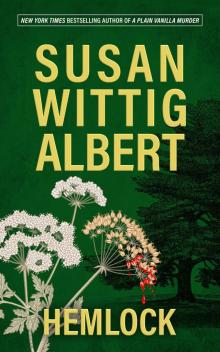 Hemlock
Hemlock Chile Death
Chile Death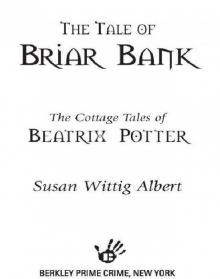 The Tale of Briar Bank
The Tale of Briar Bank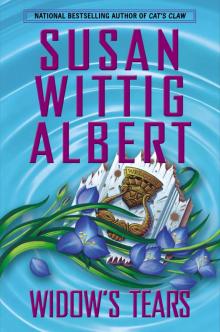 Widow's Tears
Widow's Tears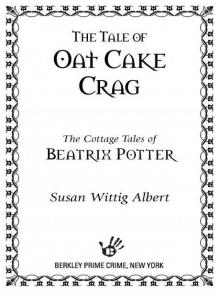 The Tale of Oat Cake Crag
The Tale of Oat Cake Crag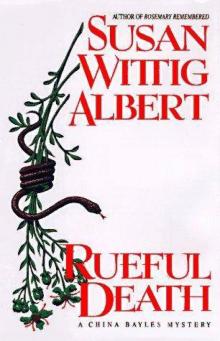 Rueful Death
Rueful Death Bittersweet
Bittersweet The Darling Dahlias and the Poinsettia Puzzle
The Darling Dahlias and the Poinsettia Puzzle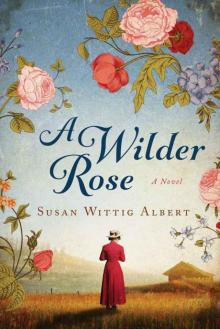 A Wilder Rose: A Novel
A Wilder Rose: A Novel Spanish Dagger
Spanish Dagger The Darling Dahlias and the Texas Star
The Darling Dahlias and the Texas Star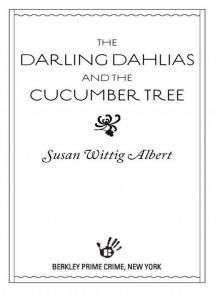 The Darling Dahlias and the Cucumber Tree
The Darling Dahlias and the Cucumber Tree China Bayles' Book of Days
China Bayles' Book of Days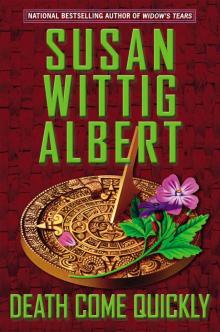 Death Come Quickly
Death Come Quickly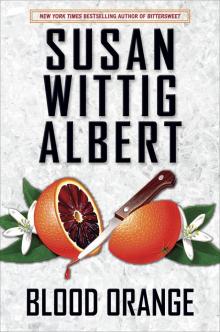 Blood Orange: A China Bayles Mystery
Blood Orange: A China Bayles Mystery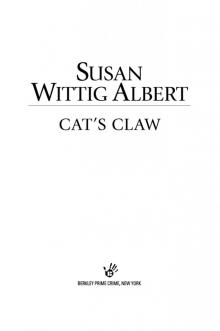 Cat's Claw
Cat's Claw The Darling Dahlias and the Naked Ladies
The Darling Dahlias and the Naked Ladies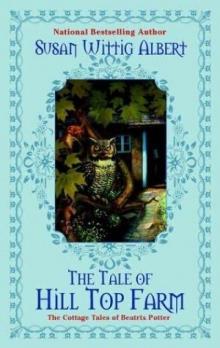 The Tale of Hill Top Farm
The Tale of Hill Top Farm The Darling Dahlias and the Confederate Rose
The Darling Dahlias and the Confederate Rose The Darling Dahlias and the Silver Dollar Bush
The Darling Dahlias and the Silver Dollar Bush The General's Women
The General's Women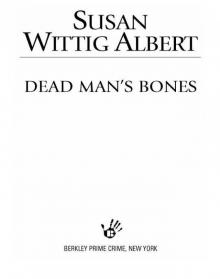 Dead Man's Bones
Dead Man's Bones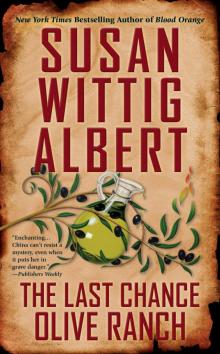 The Last Chance Olive Ranch
The Last Chance Olive Ranch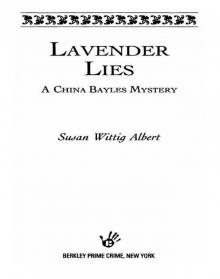 Lavender Lies
Lavender Lies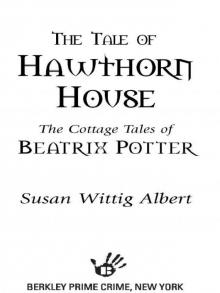 The Tale of Hawthorn House
The Tale of Hawthorn House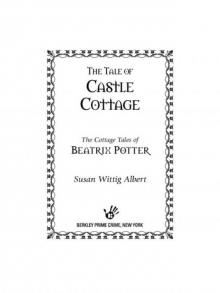 The Tale of Castle Cottage
The Tale of Castle Cottage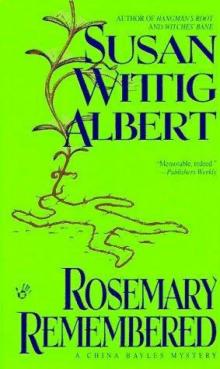 Rosemary Remembered - China Bayles 04
Rosemary Remembered - China Bayles 04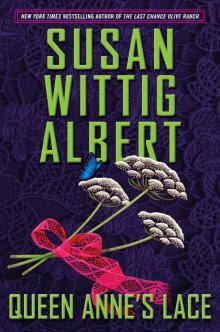 Queen Anne's Lace
Queen Anne's Lace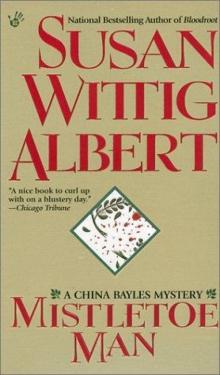 Mistletoe Man - China Bayles 09
Mistletoe Man - China Bayles 09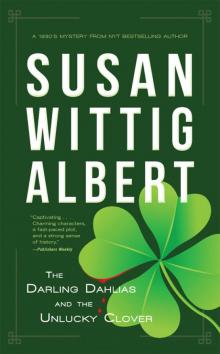 The Darling Dahlias and the Unlucky Clover
The Darling Dahlias and the Unlucky Clover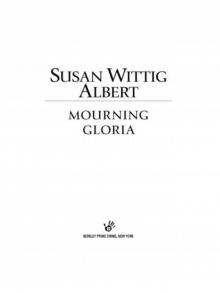 Mourning Gloria
Mourning Gloria The Darling Dahlias and the Eleven O'Clock Lady
The Darling Dahlias and the Eleven O'Clock Lady